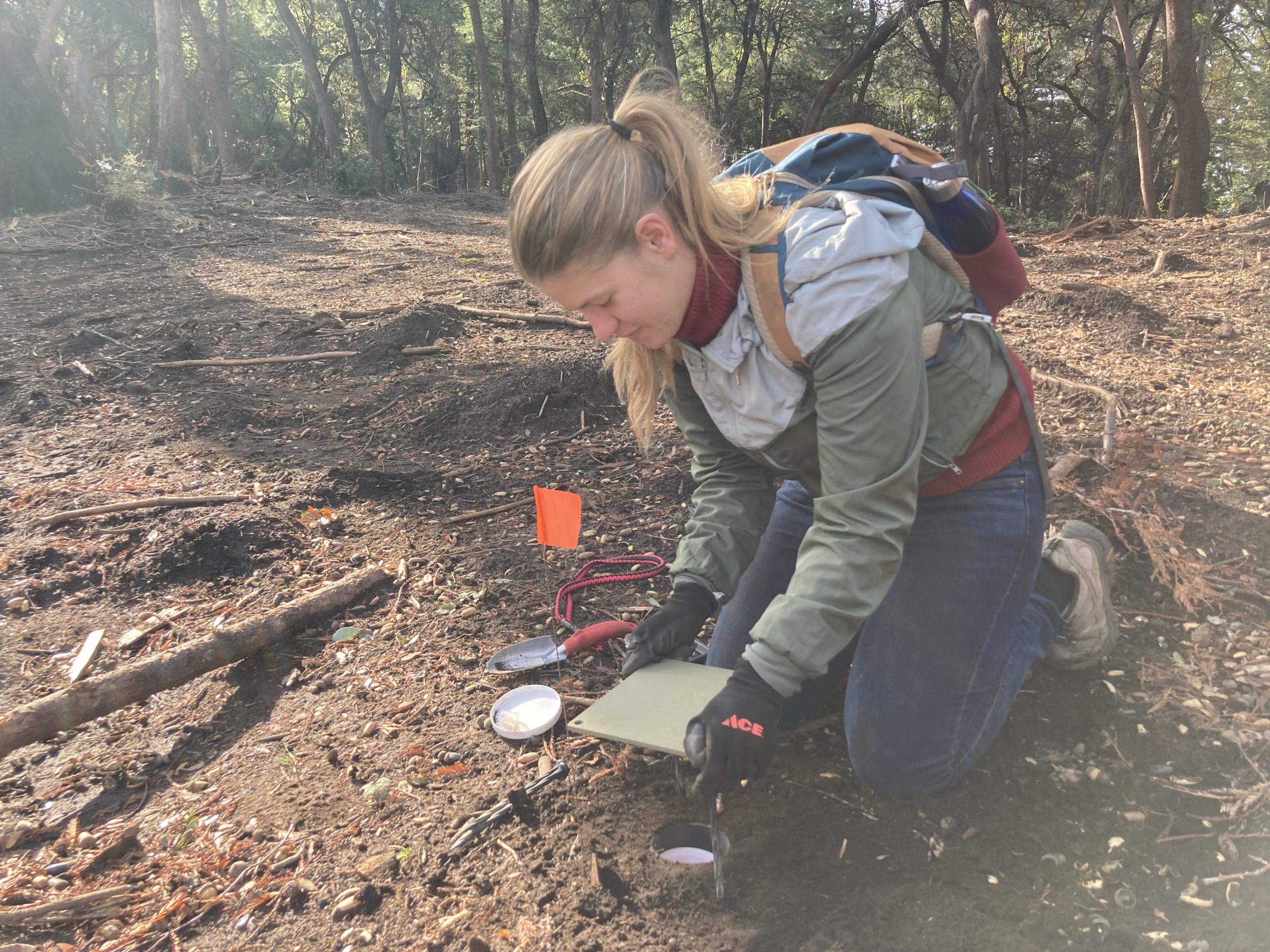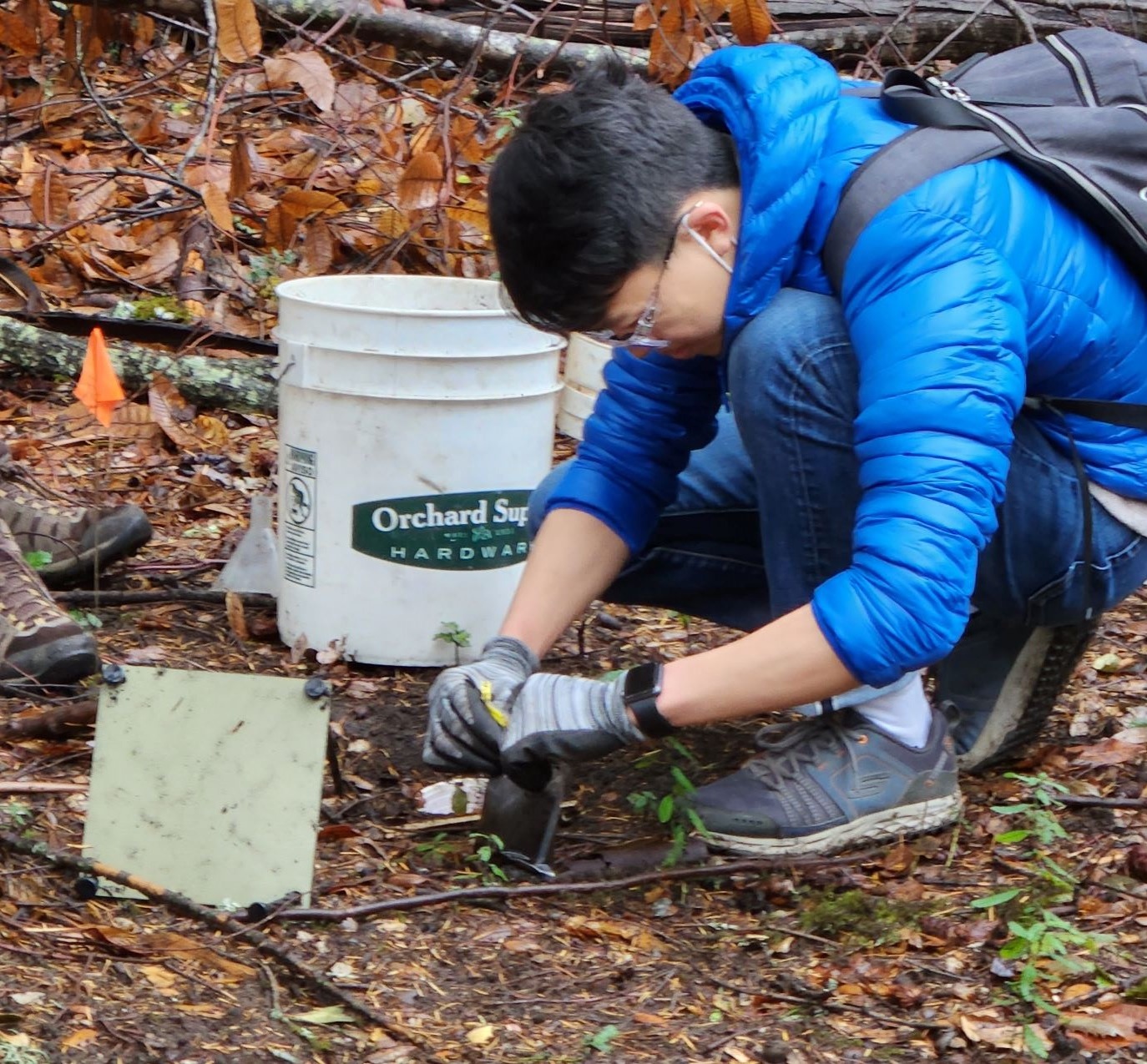 In August of 2020, a fire that began as a smoldering lightning strike, erupted into a firestorm that roared across the Santa Cruz Mountains, scorching over 86,000 acres of forest and surrounding communities. The CZU Lightning Complex Fire burned for over a month before being fully contained and was the most destructive fire to ravage Santa Cruz County in over a century.1
In August of 2020, a fire that began as a smoldering lightning strike, erupted into a firestorm that roared across the Santa Cruz Mountains, scorching over 86,000 acres of forest and surrounding communities. The CZU Lightning Complex Fire burned for over a month before being fully contained and was the most destructive fire to ravage Santa Cruz County in over a century.1
Today, as part of the Sponsored Projects for Undergraduate Research (SPUR) program, students from Professor Kip Will’s lab are helping to monitor the effects of post-fire removal of trees and underbrush at various intensities on the diversity and abundance of terrestrial arthropods, especially ground beetles (Carabidae). The project is part of a larger study being conducted by Professor Scott Stephen’s lab in ESPM, and in cooperation with the Amah Mutsun Land Trust Stewards, the Bonny Doon Fire Safe Council and the California Department of Forestry and Fire Protection (CalFire). The study area is located in San Vicente Redwoods Preserve in the Santa Cruz Mountains – a mixed hardwood forest dominated by oaks, douglas fir, madrone and bay trees – that burned in the 2020 CZU Lightning Complex Fire.

In an area of moderate intensity burn where the forest canopy remained intact following the CZU Complex Fire, students help to set up pitfall trap arrays and temperature and humidity data loggers in nine plots, each in one of three forest fuel and selective tree removal treatments. The three treatment types are categorized as minimal, moderate, and intensive levels of cutting and removal of trees and underbrush. In addition, one round of spring and fall sampling across all nine plots was done prior to the treatments to act as a baseline control sample.

A total of 72 pitfall traps are set in the nine transects two times per year – once in spring and once in late fall. Each pitfall trap is left for a one-month period after which time the samples are collected into Whirl-Pak bags and brought back to the lab. At the same time, temporal and spatial data collected from the field are entered into the Essig Museum’s online database.
Digging to set the traps and retrieval of samples is dirty and physically challenging work, often on slopes where poison oak is abundant. In the process, students learn valuable field techniques including how to set up sampling regimes and record accurate environmental data. Back in the lab students also learn how to sort trap samples and identify arthropods. The project will yield thousands of specimens including hundreds of species over the three-year survey period.

The data collected from this ongoing project will provide opportunities to study how different post-forest fire fuel treatments affect not only the diversity and abundance of ground-dwelling arthropods, but how overall forest health, structure and resources recover following fuel reduction and subsequent prescribed burning in San Vicente Redwoods Preserve.
The value of data collected from long-term monitoring projects like this will long outlive the project itself. Locality data and identifications recorded in the Essig Museum’s online database and the specimens in the museum’s collections provide an important resource for current research as well as future research and education. These vital resources can help inform not only our understanding of current species distribution patterns but also help answer questions about the effect of future landscape and climate changes. – Roberta Brett
